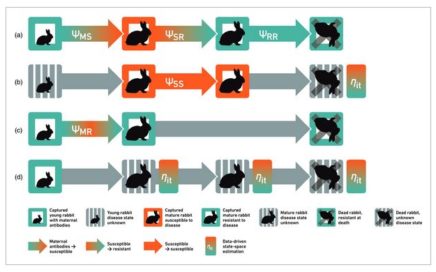Killing wild rabbits conserves native mammals
Ecological modellers have shown how reducing wild rabbit numbers helps maintain small native mammals. Benefits for small mammals occur when 30-40% of rabbits are removed through a mix of biological and physical controls. Higher rates of rabbit removal can lead to a decline in small mammals in the short term, but with subsequent long term […]

